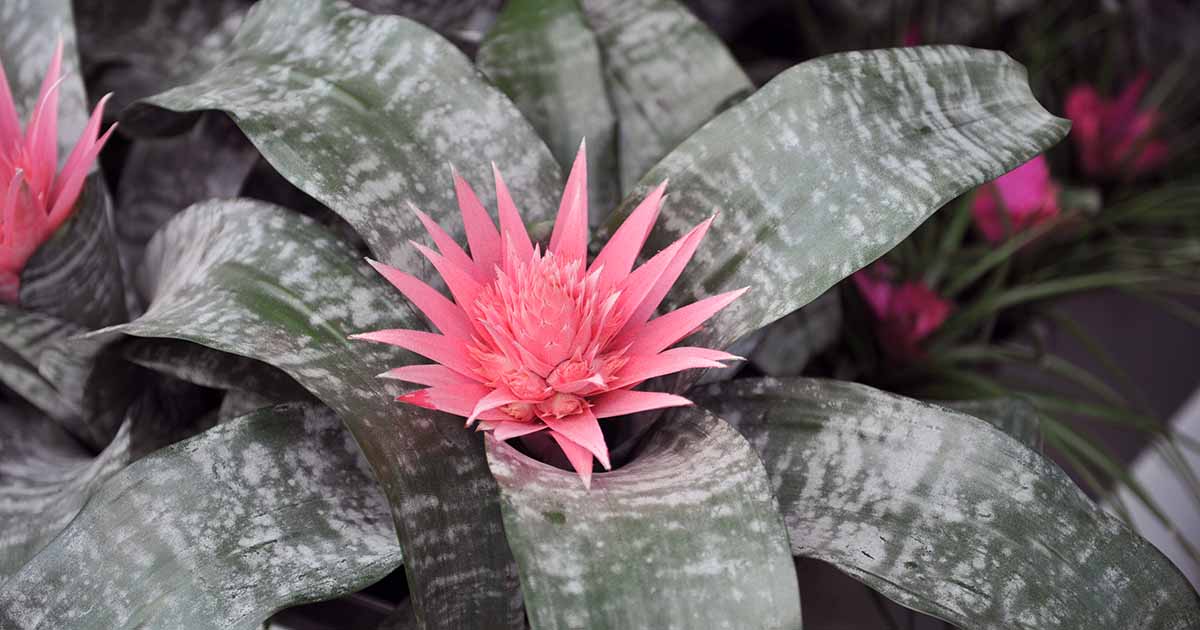How to Grow
In Zones 10 to 11, the tropical urn makes a striking bed and border specimen, ground cover, and mass planted drift.


It is also an excellent candidate for container gardening in a partially shaded setting.
Indoors, the silver vase shines as an exceptional houseplant that creates a dramatic focal point before and during blooming.
Light
If you are growing outdoors, choose a location with filtered sunlight to part shade.
Indoors, you’ll need bright, indirect sunlight. A few feet away from a south- or east-facing window is ideal.
Soil
These bromeliads can grow in organically-rich loam, provided it is well-draining, and they tolerate a wide soil pH range of between 4.0 and 7.0.
Since many orchids are also flowering epiphytes, you can use orchid potting mix for your indoor specimens.
If you need a recommendation, Professional Orchid Soil from Leaves and Soul contains 40 percent pine bark, 30 percent lava in quarter-inch pieces, and 30 percent calcined clay or Turface to inhibit oversaturation.
The combination of ingredients provides organic matter especially beneficial for young specimens and sharp drainage.


Leaves and Soul Professional Orchid Soil
Professional Orchid Soil is available from Leaves and Soul via Amazon.
Temperature and Humidity
Temperatures of 65 to 75°F are perfect for this species. Urns like humidity but will tolerate drier environments, provided they have consistent moisture.
If your home has less than 30 percent humidity, you can place the pot on a pan of moist pebbles to increase the ambient humidity, run a humidifier, or lightly mist the leaves once or twice a week.
Water
Juvenile plants without developed “wells” at the center of their rosettes rely on soil moisture for hydration.
As they mature, the well should be kept topped up and the soil allowed to almost dry out.
If you’re growing outdoors, you can rinse the wells every month with the garden hose to stir up any breeding mosquitoes, then refill them.


Note that in a damp environment with poor airflow and inadequate sunlight, standing well water may lead to rotting.
In these conditions watering houseplants at soil level may be preferable to tank filling.

